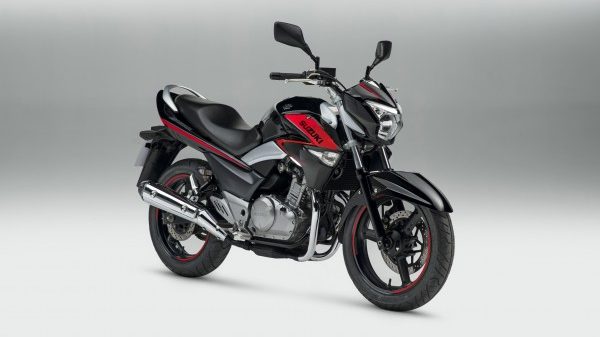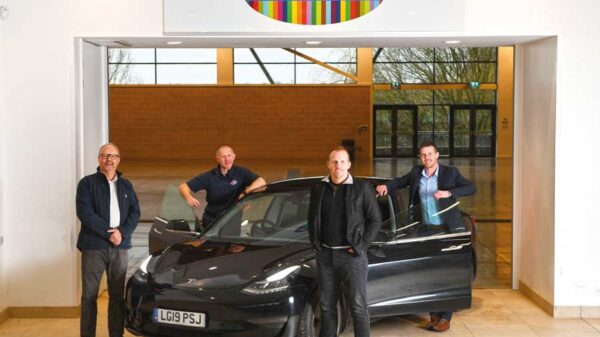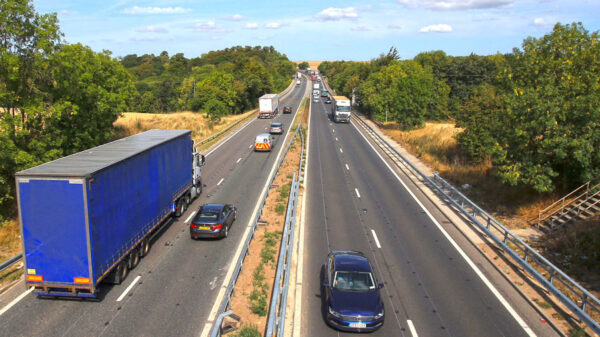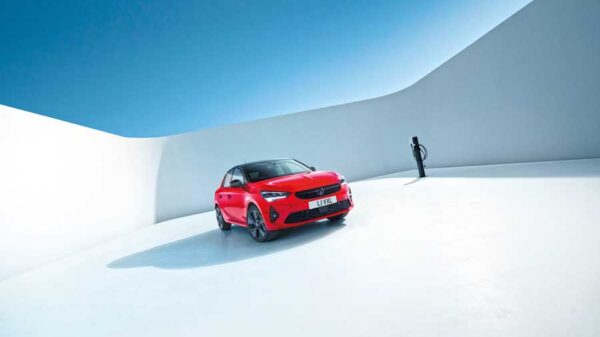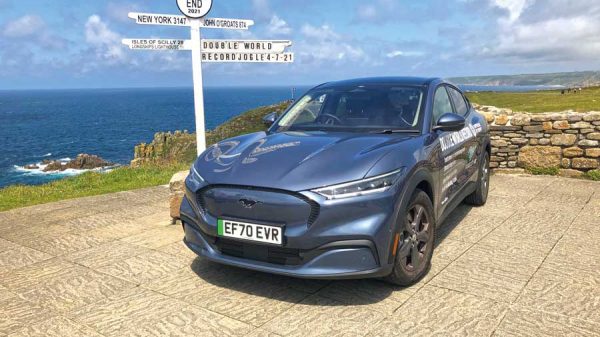The original Katana has maintained a legendary status since its launch in 1981, with a design that remains as impactful now as it did then. It influenced the styling of the 2005 Stratosphere concept and more recently the Katana 3.0 concept, which debuted at Eicma in 2017.
The immediately recognisable rectangular headlight is updated with stacked LED lights, as new LED running lights are adopted to accentuate the bike’s sharp face.
At the back LED tail lights sit in an angular seat unit, immediately eye-catching thanks to the repositioning of the number plate hanger, which now extends from the swingarm and hugs the rear tyre. It also houses the indicators, with the whole design further highlighting the clean look of the tail section, atop which sits a one-piece seat that further pays homage to the original Katana in its design.
The positive riding position, enhanced by one-piece ‘bars, sees riders perch behind a fuel tank and top fairing that are also immediately recognisable as Katana, boasting retro appeal but with a modern twist. Classic red Suzuki lettering adorns the tank and mimics the original but follows aggressive new lines, while the fairing, too, takes the ‘80s bike’s angles and exaggerates them for a purposeful-looking front end.
Despite drawing inspiration from an ‘80s legend, the new Katana is underpinned by thoroughly modern engineering. The frame is the same lightweight, twin-spar aluminium frame that is specific to the GSX-S1000 series, designed for nimble handling and superior road-holding performance.
Fully-adjustable 43mm USD front forks and a rear shock adjustable for rebound damping and spring pre-load come courtesy of KYB, and Brembo monobloc front brake calipers are shared with the current GSX-R1000, biting 310mm floating discs. ABS is provided by Bosch.
Power comes from the famed inline four-cylinder engine that began life in another legendary Suzuki – the GSX-R1000 K5, but heavily revised and modernised for street-based performance. Renowned for its torque and midrange as well as top-end power, the 999cc engine uses a long-stroke design (73.4mm x 59.0mm) for a broad spread of power across the rev range, with peak power output 150hp at 10,000rpm, and peak torque 108Nm at 9,500rpm.
A three-mode traction control system – that can also be turned off – allows riders to exploit the bike’s performance in various road and weather conditions. The system continuously monitors front and rear wheel speeds, throttle position, crank position, and gear position sensor. It quickly reduces engine output when wheelspin is detected by adjusting ignition timing and air delivery. This helps ensure smoother traction control operation and less-noticeable intervention.
Riders can quickly and easily identify their current traction control setting on a new LCD dash, which also shows tacho, odo, trip meters, gear position, water temperature, fuel range, average fuel consumption, instant fuel consumption, fuel gauge, clock, lap time, and battery voltage.
The new Katana is expected to arrive in spring 2019.

